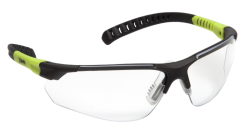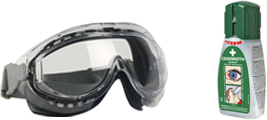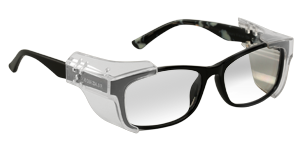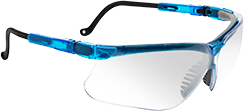Goggles are one example of eye protection that will provide proper eye safety when the risk of being struck by projectiles is high. It is important to know what type of eye and face protection is accepted by the current CSA Standard Z94.3 in order to select the proper protection recommended for each task. Certain tasks are higher risk than others and demand airtight eye protection versus a simple pair of safety spectacles.
Goggles are available in many styles but all belong to one of 3 main categories : direct vent, indirect vent and closed vent. Direct vent goggles use a vent placed at the front or on the sides of the goggles for better air circulation. Indirect vent goggles have a venting system hidden within the goggles to protect from a chemical splash. This type also minimizes fogging. Closed vent goggles are completely airtight and will even prevent eye irritation due to chemical fumes. We should not underestimate the risks entailed when a task is performed without the proper eye protection. For example, when sanding wearing goggles is a wise choice, as it will prevent wood chips from being projected into the eye.
Most goggles fit over your regular prescription glasses, so even at home you can be equipped with the proper eye protection for very little cost. This type of protection also has the advantage of having an adjustable headband that keeps the goggles firmly in place, even in extreme heat conditions. Since no special adjustments are required, more than one person can use a set of goggles. Just leave a pair near each high-risk workstation. Finally, goggles provide wide peripheral vision as they are made up of a single curved lens offering unobstructed vision.
Certain models have replacement lenses available and even peel-off lens systems. This allows you to keep the lens of your goggles in top condition and is ideal for paint shops.






